Parthians: Their Great Empire And Skilled Horse Archers
A. Sutherland - AncientPages.com - The Parthian people established an empire that lasted almost 500 years, from the mid-3rd century BC until 224 CE. Their empire was the most lasting of the empires of the ancient Near East.
They came to power under king Mithradates the Great (171-138 BC); their territories stretched from the Euphrates River in the west to Central Asia and the borders of Bactria in the east. The Parthian empire occupied Iraq, Armenia, all of modern Iran, parts of Turkey, Georgia, Azerbaijan, Turkmenistan, Afghanistan and Tajikistan, and for short time, also territories in Pakistan, Syria, Lebanon, Israel and Palestine.
Strangely, despite their enormous role in forming a strong link between the peoples of East Asia and Europe - the Parthians were overshadowed by the Achaemenids and Sassanids.
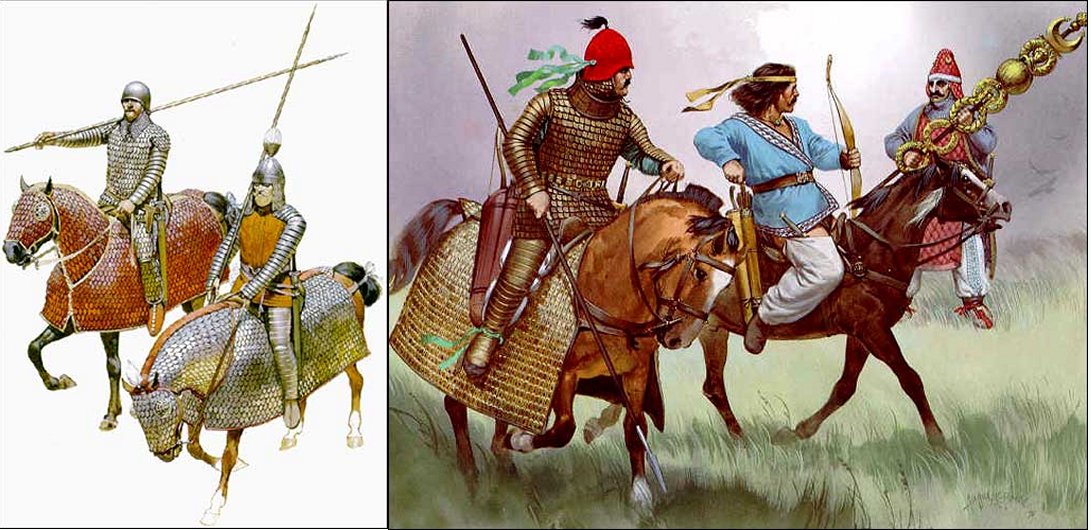
Left: Parthian Cataphracts (Fully Armoured Parthian Cavalry); Right from Left: East Parthian Cataphract (heavy cavalry with man and horse decked in mailed armor.); Middle: Parthian Horse-Archer; Right: Parthian Cataphract from Hatra. Image credit: www.iranchamber.com
The Parthians were originally part of a tribe known as the Parni (or Aparni), who originated on the eastern edge of the Caspian Sea. We know about their history but only from Greek and Roman sources, which mainly describe the Roman battles with the Parthians and their excellent warfare.
The Parthians were literate people but unfortunately, they did not record histories of their dynasty. They built temples, monuments, tombs, and Parthian coins, which they made for the reigns of their kings and this procedure – although, rather unusual in Antiquity – functioned very well.
Their religion was an early form of Zoroastrianism, but they were also tolerant of other religious beliefs.
 The silver drachma of Arsaces I of Parthia (r. c. 247–211 BC) with a Greek-alphabet inscription of his name. Image - Classical Numismatic Group, Inc. http://www.cngcoins.com - CC BY-SA 3.0
The silver drachma of Arsaces I of Parthia (r. c. 247–211 BC) with a Greek-alphabet inscription of his name. Image - Classical Numismatic Group, Inc. http://www.cngcoins.com - CC BY-SA 3.0
Their most famous towns such as Ctesiphon, Seleucia, Ecbatana, Rhagae, Hecatompylus, Nisâ, and Susa flourished. The first king of the Parthians was Tiridates' brother Arsaces I. His capital was Hecatompylus, the capital of the Parthian Arsacid dynasty by 200 BC.
The Parthians, like their neighbors, the Scythians, were able to succeed in battle often due to their use of horse archers. Ancient Parthians were brave and extremely skilled archers mounted on light horses. While pretending to flee at a full gallop in panic, they turned their bodies back to shoot at the pursuing enemy. It was their strategy - to confuse the enemy by pretending to be in retreat – and then, attack.
 A rock-carved relief of Mithridates I of Parthia (r. c. 171–138 BC), seen riding on horseback at Xong-e Ashdar,city of Izeh, Khuzestan Province, Iran. Image: https://iranontrip.ir/page/en-637/Parthian-Empire
A rock-carved relief of Mithridates I of Parthia (r. c. 171–138 BC), seen riding on horseback at Xong-e Ashdar,city of Izeh, Khuzestan Province, Iran. Image: https://iranontrip.ir/page/en-637/Parthian-Empire
From this ancient Parthian strategy originates the term "Parthian shot" that symbolizes perfection and deadly accuracy. Now it is known as “parting shot”.
The key to their many victories was the crucial role of Parthian archers.
The Roman-Parthian wars lasted so long because the Parthians were hard to defeat. The Romans relied on heavy infantry; the Parthian armies contained of two types of cavalry: the heavy-armed and armored cataphracts and light brigades of mounted archers.
Written by – A. Sutherland AncientPages.com Staff Writer
Updated on Oct 14, 2023
Copyright © AncientPages.com All rights reserved. This material may not be published, broadcast, rewritten or redistributed in whole or part without the express written permission of AncientPages.com
Expand for referencesReferences:
More From Ancient Pages
-
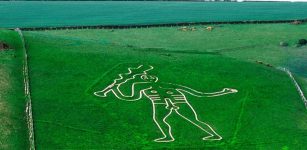 Has The Mystery Of Cerne Abbas Giant Been Solved?
Archaeology | Jan 2, 2024
Has The Mystery Of Cerne Abbas Giant Been Solved?
Archaeology | Jan 2, 2024 -
 Has The Mystery Of The 11,000-Year-Old Amazonian Rock Art Been Solved?
Places | Nov 15, 2024
Has The Mystery Of The 11,000-Year-Old Amazonian Rock Art Been Solved?
Places | Nov 15, 2024 -
 Modern Pesticide Accelerates Corrosion Of Ancient Roman Bowl
Archaeology | Oct 6, 2022
Modern Pesticide Accelerates Corrosion Of Ancient Roman Bowl
Archaeology | Oct 6, 2022 -
 India’s Mysterious Stonehenge: Prehistoric Complex Of Gigantic Standing Stones Of Willong Is An Enigma
Featured Stories | Jul 30, 2016
India’s Mysterious Stonehenge: Prehistoric Complex Of Gigantic Standing Stones Of Willong Is An Enigma
Featured Stories | Jul 30, 2016 -
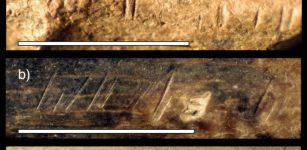 Humans’ Evolutionary Relatives Butchered One Another 1.45 Million Years Ago
Ancient Symbols | Jun 26, 2023
Humans’ Evolutionary Relatives Butchered One Another 1.45 Million Years Ago
Ancient Symbols | Jun 26, 2023 -
 Search For Noah’s Ark Continues – The ‘Inside Mount Ararat’ Research Project
Featured Stories | May 4, 2014
Search For Noah’s Ark Continues – The ‘Inside Mount Ararat’ Research Project
Featured Stories | May 4, 2014 -
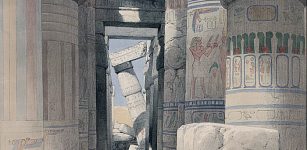 Karnak: One Of Largest Temple Complexes In The World And Its Spectacular View
Civilizations | Sep 5, 2015
Karnak: One Of Largest Temple Complexes In The World And Its Spectacular View
Civilizations | Sep 5, 2015 -
 Strange Case Of The Italian Doppelganger – A Tragedy – Part 1
Featured Stories | Oct 14, 2019
Strange Case Of The Italian Doppelganger – A Tragedy – Part 1
Featured Stories | Oct 14, 2019 -
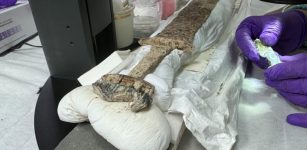 Spectacular 6th Century Sword With Runes Found In Anglo-Saxon Grave Near Canterbury In Kent
Archaeology | Dec 27, 2024
Spectacular 6th Century Sword With Runes Found In Anglo-Saxon Grave Near Canterbury In Kent
Archaeology | Dec 27, 2024 -
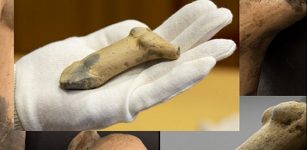 Fragments Of 6,500-Year-Old Figurine Of ‘Venus of Egerszeg’ – Unearthed
Archaeology | Jul 21, 2020
Fragments Of 6,500-Year-Old Figurine Of ‘Venus of Egerszeg’ – Unearthed
Archaeology | Jul 21, 2020 -
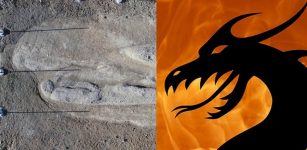 Ancient Dragon Stone That Inspired Legends Discovered In Turkey
Archaeology | Dec 12, 2018
Ancient Dragon Stone That Inspired Legends Discovered In Turkey
Archaeology | Dec 12, 2018 -
 On This Day In History: Noah Webster, Jr. “Father Of American Scholarship And Education” Was Born – On Oct 16, 1758
News | Oct 16, 2016
On This Day In History: Noah Webster, Jr. “Father Of American Scholarship And Education” Was Born – On Oct 16, 1758
News | Oct 16, 2016 -
 Campus Mounds Are The Oldest Known Human-Made Structures In North America – New Research Shows
Archaeology | Aug 22, 2022
Campus Mounds Are The Oldest Known Human-Made Structures In North America – New Research Shows
Archaeology | Aug 22, 2022 -
 ‘Curious’ Creature With No Anus Is Not Earliest Human Ancestor – Relieved Scientists Discover
Archaeology | Aug 18, 2022
‘Curious’ Creature With No Anus Is Not Earliest Human Ancestor – Relieved Scientists Discover
Archaeology | Aug 18, 2022 -
 Sacred Artifact With Mystical Powers – The Discovery – Part 2
Artifacts | Apr 26, 2019
Sacred Artifact With Mystical Powers – The Discovery – Part 2
Artifacts | Apr 26, 2019 -
 Unraveling The Mystery Of The Phoenix Bird – Symbol Of The Sun And Eternal Rebirth Of Life
Egyptian Mythology | Nov 6, 2023
Unraveling The Mystery Of The Phoenix Bird – Symbol Of The Sun And Eternal Rebirth Of Life
Egyptian Mythology | Nov 6, 2023 -
 Underwater Ancient Cypress Forest Offers Clues To The Past
Archaeology | Jun 29, 2021
Underwater Ancient Cypress Forest Offers Clues To The Past
Archaeology | Jun 29, 2021 -
 Why Is The Oseberg Ship Burial A Great Viking Mystery?
Vikings | Jan 22, 2024
Why Is The Oseberg Ship Burial A Great Viking Mystery?
Vikings | Jan 22, 2024 -
 Towering Sacred Mt. Fuji: Abode Of The Immortals In Ancient Japanese Beliefs
Featured Stories | Feb 23, 2017
Towering Sacred Mt. Fuji: Abode Of The Immortals In Ancient Japanese Beliefs
Featured Stories | Feb 23, 2017 -
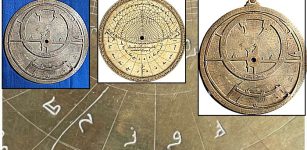 Rare Eleventh-Century Astrolabe Unearthed Recently Sheds Light On Islamic-Jewish Scientific Exchange
Scripts, Paintings & Inscriptions | Mar 4, 2024
Rare Eleventh-Century Astrolabe Unearthed Recently Sheds Light On Islamic-Jewish Scientific Exchange
Scripts, Paintings & Inscriptions | Mar 4, 2024

